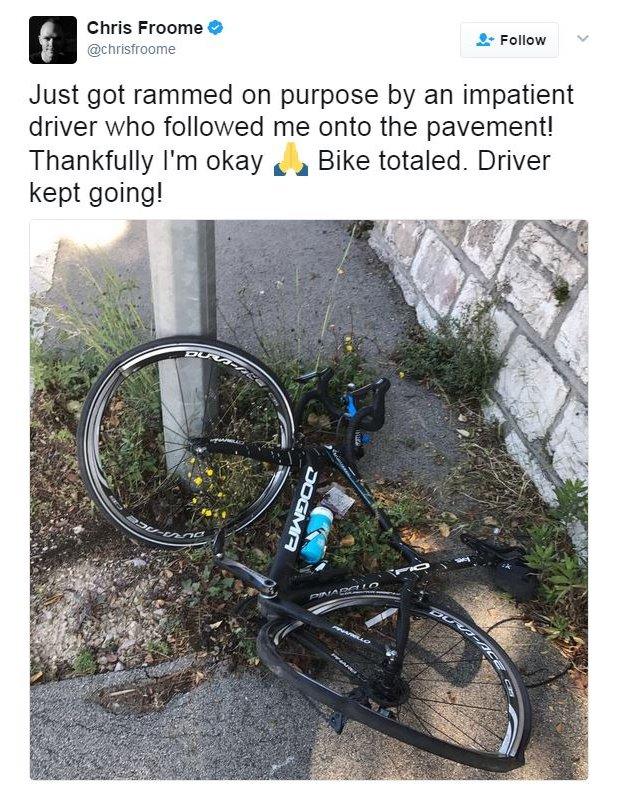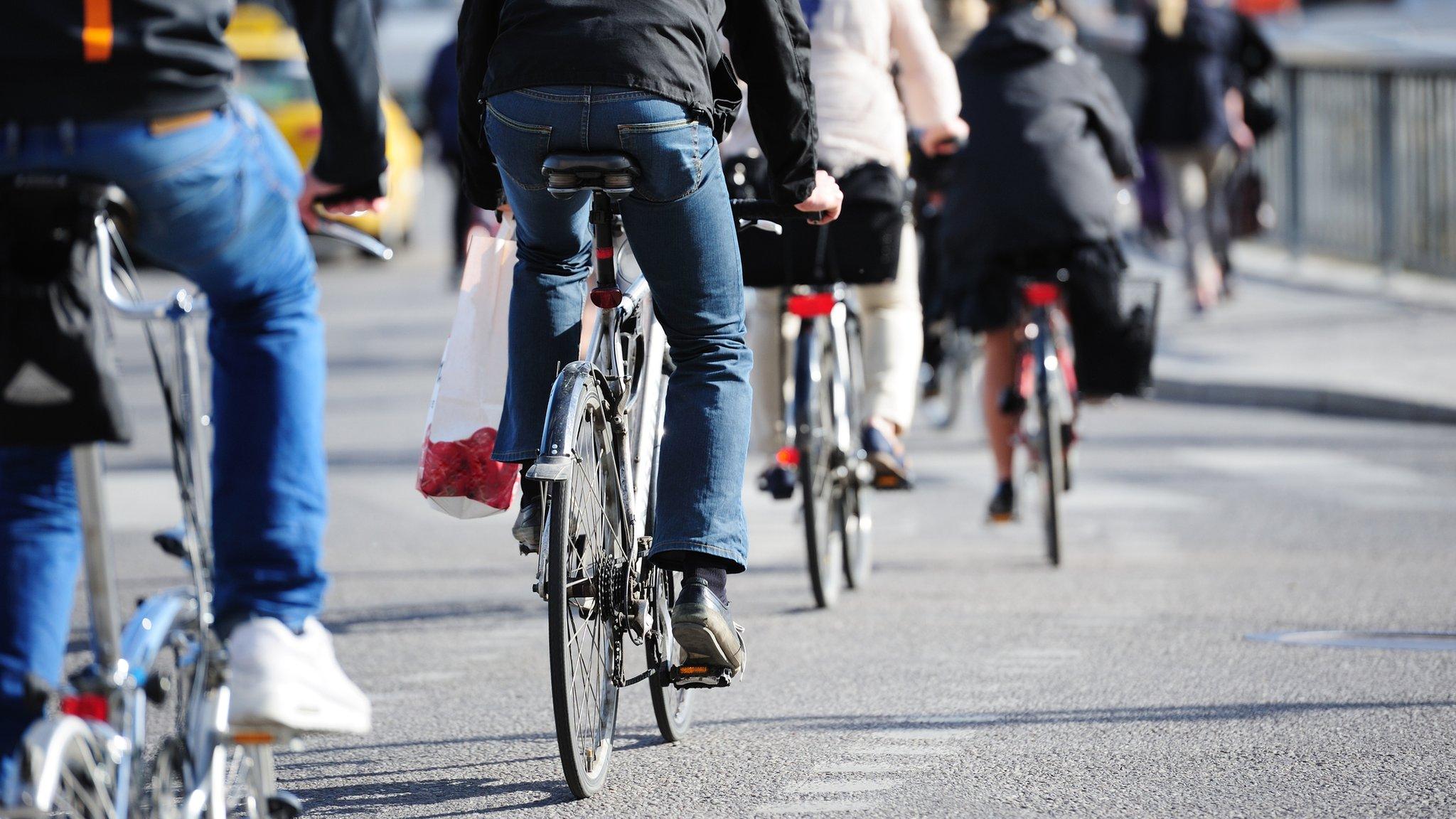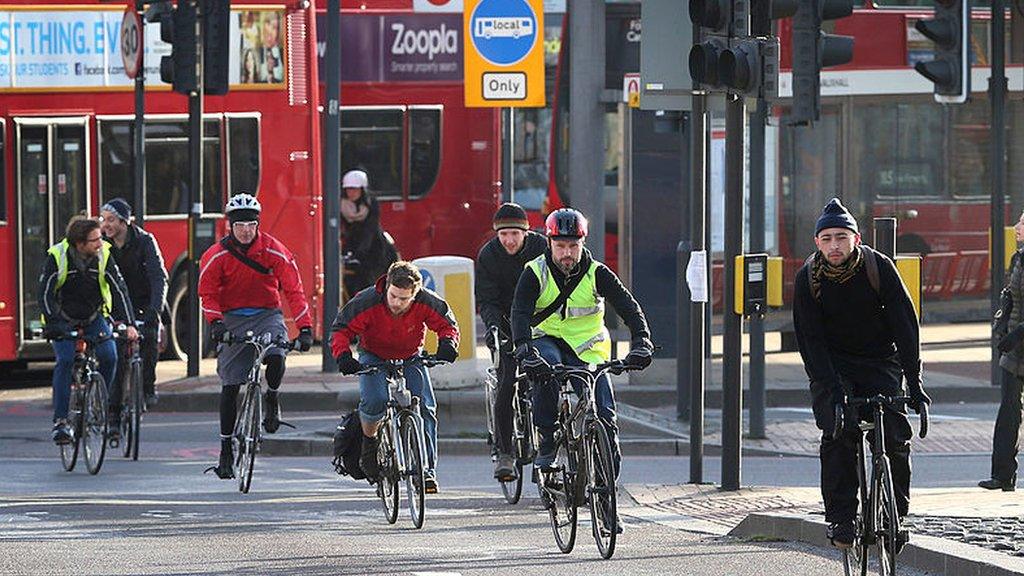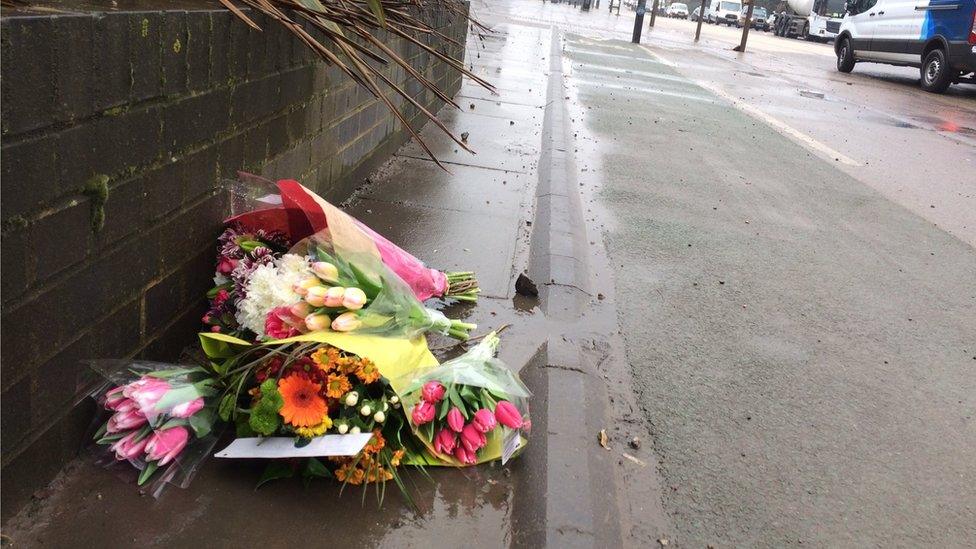Froome crash: How dangerous is cycling on the roads?
- Published

Tour de France winner Chris Froome escaped injury when he was "rammed on purpose" by a motorist while training in southern France. Other professional riders have recently been hurt or even killed. How dangerous are the open roads for cyclists?
About 100 cyclists die as a result of collisions or coming off their bikes on the roads in Great Britain each year. And more than 3,000 are seriously injured.
But the good news is the number of deaths has dropped.
There were 55 cyclist fatalities per billion miles cycled in 2005, which fell to 31 deaths per billion miles in 2015.
However, when the fatalities are combined with the overall number of serious injuries, the risk of life-changing injury is still higher than it was a decade ago.
Fewer deaths, increasing risk
The rate of cyclist deaths on the road varies from country to country.
In France, where Olympic bronze medallist Froome posted a picture of his mangled bike on Twitter, about four in every 100 road deaths are cyclists.
That is slightly lower than in the UK, where cyclists make up 6% of those killed, according to European Commission statistics.
For more stories from the BBC England Data Unit visit our Pinterest board., external

Chris Froome carried on training after being knocked from his bike
Team Sky said the 31-year-old three-time Tour de France winner had returned to his home in Monaco to get a spare bicycle and had continued his training after the incident, which was being reported to the police.
In April, Wanty-Groupe Gobert rider Yoann Offredo posted pictures on social media of himself badly bloodied, external, saying he had been the victim of an assault while out riding with two friends in the Chevreuse Valley, south west of Paris.
Another professional rider was not so fortunate.
In April, Michele Scarponi, who won the 2011 Giro d'Italia, was killed when he was knocked off his bike by a van while training close to home in Italy.

Wanty-Groupe Gobert rider Yoann Offredo posted pictures of the aftermath of an attack
In Italy cyclists account for about 7% of all road deaths and the average across the European Union is about 8%.
The rate is especially high in countries where cycling is more popular. In the Netherlands, for example, cyclists account for almost a quarter of road deaths.
Greater risk than motorists
In Great Britain, cyclists are the second most at risk group of road users after motorcycle riders.
When the number of deaths and serious injuries is divided by the total number of miles travelled by all people using that form of transport, cyclists are far more at risk than car drivers.
In 2015, there were 43 more cyclists than car drivers killed or seriously hurt per billion miles travelled.
However, these figures do not take account of the health benefits of cycling. A study of commuters suggested there was a link between cycling to work and a reduced risk of cancer and heart disease.
How can cyclists stay safe?
The charity Cycling UK says cycling in Britain is a "relatively safe activity", external but that "the behaviour and attitudes of some road users, sub-standard highway layout and motor traffic volume and speed all conspire to make cycling feel and look more dangerous than it actually is".
Campaign co-ordinator Sam Jones says: "Cycling is no more dangerous than walking or doing your gardening, but we do find the increased risk of injury is worrying and there are a number of things that can be done to address this."
The charity wants to see 20mph limits on narrow roads and a network of cycling routes.
Its tips for safer cycling, external include:
Don't rely on being seen by drivers, no matter how brightly you are dressed
Be proactive - change road position, interact with other road users, ride assertively
Make eye contact where possible or at least try and gauge whether or not you've been seen
Cover your brakes so you can slow down or stop when approaching junctions or on roundabouts if you are not sure you have been seen
Move out early and create as much space as possible so you can see and be seen
- Published20 April 2017

- Published7 April 2017

- Published10 February 2017
